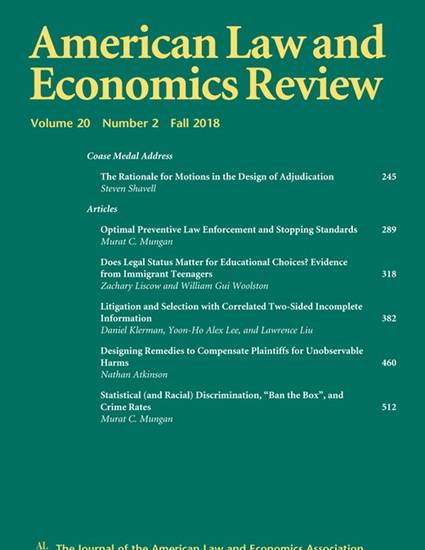
This article studies interactions between criminal behavior and employment dynamics in a setting where employees belong to one of two groups. Employers can statistically discriminate based on group membership as well as criminal records. It first shows that “self-fulfilling expectations” cannot exist when there are diminishing returns to deterrence from increasing expected sanctions. This eliminates the possibility of multiple equilibria within groups, and suggests that statistical discrimination by employers can only be motivated by differences across groups’ criminal tendencies. This type of statistical discrimination typically leads to an increase in crime, and the article identifies sufficient conditions for this result. This suggests that societies in which group membership is salient (e.g. due to racial heterogeneity) are, ceteris paribus, likely to have higher crime rates. Attempting to fix the negative impacts of statistical discrimination through policies that reduce the visibility of criminal records (e.g. ban the box) increases crime further. Moreover, such policies cause greater negative effects for law abiding members of the higher-criminal-tendency group, which is consistent with the unintended consequences associated with ban the box campaigns discussed in the empirical literature.
Available at: http://works.bepress.com/mungan/75/
